Download User`s Manual >>
Transcript
This device complies with Part 15 of the FCC Rules. Operation is subject to the following two conditions: (1) This device may not cause harmful interference, and (2) This device must accept any interference received, including interference that may cause undesired operation. Note: This equipment has been tested and found to comply with the limits for Class B digital devices, pursuant to Part 15 of the FCC rules. These limits are designed to provide reasonable protection against harmful interference in a residential installation. This equipment generates, uses and can radiate radio frequency energy and, if not installed and used in accordance with the instructions, may cause harmful interference to radio communications. However, there is no guarantee that interference will not occur in a particular installation. If this equipment does cause harmful interference to radio or television reception, which can be determined by turning the equipment off and on, the user is encouraged to try to correct the interference by one or more of the following measures: User’s Manual >> FCC STATEMENT Reorient or relocate the receiving antenna Increase the separation between the equipment and receiver Connect the equipment into an outlet on a circuit different from that to which the receiver is connected Consult the dealer or an experienced radio/TV technician for help Use of shielded cable is required to comply with Class B limits in Subpart B of Part 15 of the FCC rules. Do not make any changes or modifications to the equipment unless otherwise specified in the manual. If such changes or modifications should be made, you could be required to stop operation of the equipment. EN-1 Digital Camera >> TRADEMARK INFORMATION Microsoft ® and Windows ® are U.S. registered trademarks of Microsoft Corporation. Pentium® is a registered trademark of Intel Corporation. Macintosh is a trademark of Apple Computer, Inc. SDTM is a trademark. Other names and products may be trademarks or registered trademarks of their respective owners. READ THIS FIRST Notice: 1. Product design and specifications are subject to change without notice. This includes primary product specifications, software, software drivers, and user’s manual. This User Manual is a general reference guide for the product. 2. The product and accessories that come with your camera may be different from those described in this manual. This is due to the fact that different retailers often specify slightly different product inclusions and accessories to suit their market requirements, customer demographics, and geographical preferences. Products very often vary between retailers especially with accessories such as batteries, memory cards, cables, pouches, and language support. Occasionally a retailer will specify a unique product color, appearance, and internal memory capacity. Contact your dealer for precise product definition and included accessories. 3. The illustrations in this manual are for the purpose of explanation and may differ from the actual design of your camera. 4. The manufacturer assumes no liability for any errors or discrepancies in this user manual. EN-2 Read and understand all Warnings and Cautions before using this product. Warning If foreign objects or water have entered the camera, turn the power OFF and remove the batteries. Continued use in this state might cause fire or electric shock. Consult the store of purchase. If the camera has fallen or its case has been damaged, turn the power OFF and remove the batteries. Continued use in this state might cause fire or electric shock. Consult the store of purchase. User’s Manual >> SAFETY INSTRUCTIONS Do not disassemble, change or repair the camera. This might cause fire or electric shock. For repair or internal inspection, ask the store of purchase. Use the specified batteries. Use with any other type of batteries might cause explosion or influence the camera’s performance. Do not use the camera in areas near water. This might cause fire or electric shock. Take special care during rain, snow, on the beach, or near the shore. Do not place the camera on inclined or unstable surfaces. This might cause the camera to fall or tilt over, causing injury. Keep the batteries out of the reach of children. Swallowing batteries might cause poisoning. If the batteries are accidentally swallowed, immediately consult a physician. Do not use the camera while you are walking, driving or riding a vehicle. This might cause you to fall over or result in traffic accident. EN-3 Digital Camera >> Caution Load the batteries paying careful attention to the polarity (+ or –). Load the batteries with their polarities inverted might cause fire and injury, or damage to the surrounding areas due to the battery rupturing or leaking. Do not fire the flash close to anyone’s eyes. This might cause damage to the person’s eyesight. Do not subject the LCD monitor to impact. This might damage the glass on the screen or cause the internal fluid to leak. If the internal fluid enters your eyes or comes into contact with your body or clothes, rinse with fresh water. If the internal fluid has entered your eyes, consult a physician to receive treatment. A camera is a precision instrument. Do not drop it, strike it or use excessive force when handling the camera. This might cause damage to the camera. Do not use the camera in humid, steamy, smoky, or dusty places. This might cause fire or electric shock. Do not remove the batteries immediately after long period of continuous use. The batteries become hot during use. Touching hot batteries might cause burns. Do not wrap the camera or place it in cloth or blankets. This might cause heat to build up and deform the case, resulting in fire. Use the camera in a well-ventilated place. Do not leave the camera in places where the temperature may rise significantly, such as inside a car. This might adversely affect the case or the parts inside, resulting in fire. Before you move the camera, disconnect cords and cables. Failure to do this might damage cords and cables, resulting in fire and electric shock. EN-4 When you use the batteries, carefully read and strictly observe the Safety Instructions and the notes described below: Use only the specified batteries. Avoid using the batteries in extremely cold environments as low temperatures can shorten the batteries life and reduce camera performance. This low temperature will also influence Alkaline batteries performance, therefore NiMH rechargeable batteries are highly recommended. When you are using the new rechargeable batteries or rechargeable batteries that has not been used for an extended period of time (the batteries that passed the expiry date are exception) might affect the number of images that can be captured. Therefore, to maximize their performance and lifetime, we recommend that you fully charge the batteries and discharge them for at least one complete cycle before use. The batteries may feel warm after long period of continuous use of the camera or the flash. This is normal and not a malfunction. The camera may feel warm after long period of continuous use. This is normal and not a malfunction. If the batteries are not to be used for a long period of time, remove it from the camera to prevent leakage or corrosion. If the batteries are not to be used for a long period of time, store them after no batteries power left. If the batteries are stored for a long time in a fully charged state, their performance may be impaired. Risk of explosion if batteries are replaced by an incorrect type. Dispose of used batteries according to the instructions. Never use batteries of different types (together) or mix old and new batteries. Never use manganese batteries. User’s Manual >> Notes on Batteries Usage EN-5 Digital Camera >> EN-6 CONTENTS 8 INTRODUCTION 8 Overview 9 Package Contents 10 GETTING TO KNOW YOUR CAMERA 10 Front View 11 Rear View 12 LED Indicator & Beep 13 LCD Monitor Icons 15 GETTING STARTED 15 Attaching the Camera Strap 15 Loading the Batteries (Optional Accessory) 16 Inserting and Removing the SD Memory Card (Optional Accessory) 17 Turning the Power On/Off 18 Choosing the Language 18 Formatting the SD Memory Card or Internal Memory 19 Setting Image Resolution and Quality 21 CAPTURE MODE 21 Normal Mode 22 Macro Mode 22 Digital Zoom 23 Flash 24 Shooting Mode 25 Video Mode 25 Recording Video Clips 26 PLAYBACK MODE 26 Playing Back Still Images 26 Playing Back Video Clips 27 Slideshow Display 27 Protecting Images 28 Thumbnail Display 28 Rotating the Image 29 Deleting Images 29 Deleting single image / Deleting all images 30 MENU OPTIONS 30 Capture Menu 33 TRANSFERRING RECORDED IMAGES AND VIDEOS TO YOUR COMPUTER 33 Step 1: Installing the USB Driver 34 Step 2: Connecting the Camera to Your Computer 35 Step 3: Downloading Images and Video Files 36 USING THE DIGITAL STILL CAMERA AS A PC CAMERA 36 Step 1: Installing the PC camera driver 37 Step 2: Connecting the digital still camera to your computer 37 Step 3: Running your application software (i.e. Windows NetMeeting) 38 EDITING SOFTWARE INSTALLATION 38 Installing Photo Explorer 39 Installing Photo Express 40 CAMERA SPECIFICATIONS 41 TROUBLESHOOTING User’s Manual >> 31 Video Menu 31 Playback Menu 32 Setup Menu EN-7 Digital Camera >> INTRODUCTION Overview Congratulations on your purchase of the new digital camera. The main features provided by the camera include the following: LCD monitor – 1.5" color TFT LCD (228 x 220 pixels) monitor makes it easy to frame your subject when capturing images. It also displays the images you have captured. Recording media – 16 MB internal memory available for image storage. External memory supports SD memory card up to 1 GB capacity. Digital zoom – 4X digital zoom permits zoom photography. Flexible flash settings – Change the flash setting according to your lighting environment and photography mode setting. EN-8 Focus mode – Images can be captured with the distance to the subject set by normal and macro. Shooting mode – Capture different still images including single, selftimer, continuous 1.3MP and continuous VGA. Video mode – Record video clips without voice. Thumbnail display – Displays a set of 6 images on the LCD monitor for easier and quicker selection of images. Carefully unpack your camera and ensure that you have the following items. Common Product Components: Digital camera User’s manual Software CD-ROM USB cable Camera strap Camera pouch User’s Manual >> Package Contents Common (Optional) Accessories: SD memory card Batteries Accessories and components vary by retailer. EN-9 Digital Camera >> GETTING TO KNOW YOUR CAMERA Front View # 1 2 3 4 5 6 7 EN-10 Name Strap holder Lens cover Description Camera strap attachment. Protects the lens. Designed to collect and focus rays of light to Lens form a sharp image on the sensor. Blinks during Self-timer mode until image is Self-timer LED captured. Flash Provides flash illumination. POWER (Power) button Turns the camera power on and off. Captures an image or records a video clip when Shutter button the button is pressed. Rear View User’s Manual >> # Name Focus switch Normal mode Description Allows you to choose the appropriate focus setting. Allows you to capture images of subjects at a 1 distance of 1.5m to infinity. Macro mode Allows you to capture close-ups of subjects up to the distances from 0.4 - 0.6m. 2 Status LED Displays the camera current state. S button Scrolls upward. 3 Playback button Enters or exits playback mode. X button Scrolls right. 4 MODE button Sets the camera mode. SET button Confirms the chosen settings. 5 Flash button Allows you to choose the appropriate flash setting. T button Scrolls downward. 6 MENU button Toggles OSD menu on and off. W button Scrolls left. 7 Zoom button Zooms in/out the image. Provides menu information to operate the camera and previews the image before capturing it and 8 LCD monitor review it afterwards. 9 USB connector Connects a USB cable to the camera. 10 Battery cover Allows to load the batteries. 11 Memory card cover Accesses to the memory card. 12 Tripod socket Allows tripod mounting. EN-11 Digital Camera >> LED Indicator & Beep This describes the color and state of the LED indicator. LED Self-timer Status Color Red Green State Blinking Blinking On - Off Description Self-timer function is activated. Flash charging in progress. Camera is powered on. Charging process is completed. Flash is off. Beep Beep 1 sound 2 sounds 4 sounds No sound EN-12 Description The camera is powered on. Camera operation. Self-timer mode for the first 7 seconds. After an image / video clip is captured. Cannot operate or undefined button function. Low battery power Self-timer mode for the last 3 seconds. Beeper is set to off. Capture mode 1. Capture mode 2. Focus mode [No icon] Normal mode [ ] Macro mode 3. Shooting mode [No icon] Single [ ] Selftimer [ ] Cont.1.3MP [ ] Cont.VGA 4. WB (White Balance) [ A ] AUTO [ ] Daylight [ ] Cloudy [ ] Tungsten [ ] Fluorescent 5. Size [ ] VGA [ ] 1.3MP [ ] 3MP [ ] 4MP [ ] 5MP 6. Quality [ ] Normal [ ] Fine [ ] Super Fine 7. Possible number of shots 8. Digital zoom indicator 9. Flash mode [ ] Flash off [ [ ] Auto flash ] Red-eye reduction 1 11 10 9 2 3 4 5 6 2x User’s Manual >> LCD Monitor Icons 8 7 10. Remaining battery status [ ] Full battery power [ ] Medium battery power [ ] No battery power (Blinking) 11. Storage media [No icon] Internal memory [ ] SD memory card EN-13 Digital Camera >> Video mode 1. 2. 3. 4. 5. 6. Video mode Storage media Remaining battery status Possible recording time Size Focus mode (at preview mode only) 2 3 1 6 5 4 Playback mode-Still image playback 1. Capture mode 2. Protect icon 3. File number / total files 1 2 3 Playback mode-Video preview 1. 2. 3. 4. 5. Total recorded time Video mode Protect icon File number / total files Video playback/stop indicator 1 5 2 EN-14 3 4 Attaching the Camera Strap Attach the camera strap as shown in the illustration. User’s Manual >> GETTING STARTED Loading the Batteries (Optional Accessory) You can use either 2 AAA size batteries (Alkaline or Ni-MH) to power the camera. 1. Make sure the camera is turned off. 2. Open the battery cover. 3. Load the batteries, noting correct polarity (+ and -). 4. Close the battery cover firmly. EN-15 Digital Camera >> Inserting and Removing the SD Memory Card (Optional Accessory) The camera comes with 16 MB of internal memory, allowing you to store images and video clips in the camera. However, you can expand the memory capacity by using an optional SD memory card so that you can store more files. Inserting the SD memory card 1. Make sure the camera is turned off. 2. Insert the SD memory card in the correct orientation shown. Removing the SD memory card Make sure the camera is turned off. Press lightly on the edge of the SD memory card and it will eject. To prevent valuable data from being accidentally erased from an SD memory card you can slide the write-protected tab (on the side of the SD memory card) to “LOCK”. To save, edit or erase data on an SD memory card, you must unlock the card. Be sure to format an SD memory card with this digital camera before using it. Refer to section in this manual titled “Formatting the SD Memory Card or Internal Memory” for further details. EN-16 Load the batteries before starting. Turning the power on 1. Slide the lens cover to open. 2. Press the POWER button to turn the power on. The status LED lights green and the camera is initiated. When the power is turned on, the camera will start in the capture mode. User’s Manual >> Turning the Power On/Off Turning the power off Press the POWER button to turn the power off. The power is turned off automatically when the camera has not been operated for a fixed period of time. To resume the operation condition, turn the power on again. Refer to section in this manual titled “Power Off” in the Setup Menu for further details. EN-17 Digital Camera >> Choosing the Language Specify in which language menus and messages are to be displayed on the LCD monitor. 1. Toggle the MODE button to and press the SET button. 2. Select [Language] and toggle the SET button to select the displayed language. 3. To exit from the menu, press the MENU button. Language English SET Formatting the SD Memory Card or Internal Memory This utility formats the SD memory card (or internal memory) and erases all stored images and data. 1. Toggle the MODE button to and press the SET button. 2. Select [Format] with the W / X buttons and press the SET button. 3. Select with the W / X buttons and press the SET button. To cancel formatting, select and press the SET button. 4. To exit from the menu, press the MENU button. Format SET To format the internal memory, do not insert an SD memory card into the camera. Otherwise, you will format the SD memory card. Formatting the SD memory card also erases the protected images. All data other than images are also erased. Before formatting the card, make sure that all the images are unnecessary. Formatting is an irreversible action and data cannot be recovered at a later time. An SD memory card having any problem cannot be properly formatted. EN-18 Resolution and quality settings determine the pixel size (dimension), image file size, and compression ratio for your images. These settings affect the number of images that can be stored. As you get to know the camera, it is recommended that you try each quality and resolution setting to get an appreciation for the effects that these settings will have on your images. Higher resolution and higher quality images offer the best photographic results but produce large file sizes. Therefore, few images will take up a lot of memory space. High resolution and quality settings are recommended for printed output and situations requiring the finest detail. Lower resolution/quality images take up less memory space and may be quite suitable for sharing images via e-mail, in a report, or on a web page. User’s Manual >> Setting Image Resolution and Quality To change image resolution or image quality, perform these steps below: 1. Toggle the MODE button to and press the SET button. 2. Press the MENU button. 3. Select [Quality]/[Size] with the W / X buttons. 4. Toggle the SET button to select the desired setting. 5. To exit from the menu, press the MENU button. Quality Normal Size 3MP SET SET In video mode, only size setting is available. EN-19 Digital Camera >> Possible number of shots (still image) The table shows the approximate shots that you can capture at each setting based on the capacity of the internal memory and SD memory card. Size 5MP 4MP 3MP 1.3MP VGA Quality SD memory card capacity Internal Memory 32MB 64MB 128MB 256MB 512MB 1GB Normal 31 58 118 240 482 967 1936 Fine 24 46 95 192 385 773 1549 Super Fine 18 35 71 144 291 584 1169 Normal 33 62 126 256 514 1031 2066 Fine 26 49 100 202 406 814 1631 Super Fine 20 38 79 160 321 644 1291 Normal 39 74 152 307 617 1238 2479 Fine 31 58 118 240 482 967 1936 Super Fine 24 46 95 192 385 773 1549 Normal 52 98 200 404 812 1629 3262 Fine 45 84 172 349 701 1407 2817 Super Fine 35 66 135 274 551 1105 2213 Normal 110 207 422 853 1714 3439 6886 Fine 90 169 345 689 1402 2814 5634 Super Fine 76 143 292 590 1187 2381 4767 Possible recording time / sec (video clip) Size * * EN-20 Internal Memory SD memory card 32MB 64MB 128MB 256MB 512MB VGA 1:00 1:53 3:52 7:49 15:42 31:30 1:03:05 1GB QVGA 1:14 2:19 4:45 9:37 19:19 38:45 1:17:35 The data shows the standard testing results. The actual capacity varies according to the shooting conditions and settings. Frame rate of video recording would be different depending on the SD memory card access speed. If using a low access speed SD memory card, it influences the frame rate and recording time. Normal Mode Your camera is equipped with a 1.5" TFT LCD monitor to help you compose images, playback recorded images/movie clips or adjust menu settings. Before you start capturing images, be sure that the lens cover is opened and the focus switch is set to the appropriate photography mode. 1. Set the focus switch to . 2. Slide the lens cover to open. 3. Press the POWER button. 4. Toggle the MODE button to and press the SET button. 5. Compose your image in the LCD monitor. Place the subject of your photo at the center and press the shutter button. User’s Manual >> CAPTURE MODE The LCD monitor darkens in strong sunlight or bright light. This is not a malfunction. EN-21 Macro Mode Digital Camera >> For close-up of small subjects like flowers or insects, shoot using the Macro mode. You can use this feature for close-ups of subjects up to the distances from 0.4 – 0.6m. Set the focus switch to . Slide the lens cover to open. Press the POWER button. Toggle the MODE button to and press the SET button. 5. Compose the image and press the shutter button. 1. 2. 3. 4. The flash mode is automatically set to off for close-up photography. Don’t forget to set the focus switch back to Normal mode (the focus switch is set to ) after close-ups shooting. Digital Zoom Images appear closer when using the digital zoom. and 1. Toggle the MODE button to press the SET button. 2. Compose the image on the LCD monitor. 3. Toggle the button to magnify up to 4x. 1X 2X 3X 4X 4. Press the shutter button to capture a “zoomed” image. EN-22 2x The digital zoom function is not automatically cancelled after the image is captured. The digital zoom is only activated in single and self-timer shooting modes. 4MP and 5MP are made by F/W interpolation so the digital zoom is not available. Set the flash for capturing images. The flash firing mode can be set to suit for the photographic conditions. When the camera is in Normal mode (the focus switch is set to .), you can capture an image using a flash mode suitable to your circumstances. 1. Toggle the MODE button to and press the SET button. 2. Toggle the button until the desired flash mode appears. 3. Compose the image and press the shutter button. User’s Manual >> Flash The available flash settings in normal mode: Flash mode Description Flash off The flash will not fire. Select this mode when taking images in a place where flash photography is prohibited, or when the distance to the subject is beyond the effective range of the flash. Auto flash The flash fires automatically according to the ambient lighting conditions. Select this mode for general flash photography. Red-eye reduction Use this mode to reduce the red-eye effect when you want to capture natural-looking photographs of people and animals in low-light conditions. When capturing photographs of people, the red-eye effect can be reduced by increasing the room lighting if possible and having your subject not look directly into the camera. The camera’s pre-flash and slight delay in this mode will also help to improve your images. Flash off is the default setting. The flash mode is automatically set to off for close-up photography. If you will not be using the flash, turn it off. Turning the flash OFF will result in faster camera startup and faster operation because the capacitor will not be charged needlessly. Turning the flash OFF when not needed, will also improve battery life. EN-23 Digital Camera >> Shooting Mode This sets the recording method at the time of capturing images. You can capture different still images including single, self-timer, continuous 1.3MP and continuous VGA. 1. Toggle the MODE button to and press the SET button. a. Press the MENU button. b. Select [Shooting] with the W / X buttons. c. Toggle the SET button to select the desired option item. d. Press the MENU button to exit from the menu screen. 2. Compose the image and press the shutter button. This table below will help you choose the appropriate shooting mode: Shooting mode (No icon) Single Self-timer Cont. 1.3MP Cont. VGA EN-24 Description Captures an image at a time. The image is captured about 10 seconds after the shutter button is pressed. The self-timer LED blinks slowly for 7 seconds and then blinks rapidly for the last 3 seconds. This allows you to get into the scene when taking group images. Permits continuous photography of 3 images max with the image size of 1.3MP. Permits continuous photography of 3 images max with the image size of VGA. Recording Video Clips This mode allows you to record video clips (without audio) at a resolution of VGA / QVGA pixels. 1. Slide the lens cover to open. 2. Press the POWER button. 3. Toggle the MODE button to and press the SET button. 4. To start recording a video clip, press the shutter button. The recording time depends on the storage size and the subject of the image to be recorded. 5. Pressing the shutter button again stops recording. User’s Manual >> Video Mode Flash cannot be used. EN-25 PLAYBACK MODE Digital Camera >> Playing Back Still Images You can play back still images on the LCD monitor. 1. Slide the lens cover to open. 2. Press the POWER button. 3. Press the button. The last image appears on the screen. 4. Select the desired image with the W / X buttons. To view the previous image, press W button. To view the next image, press X button. Images are played back from the following storage media: * When no memory card is loaded, it plays back from internal memory. * When an SD memory card is loaded, it plays back from SD memory card. If there are no images stored in memory, icon will appear on the LCD monitor. Playing Back Video Clips You can play back video clips on the LCD monitor. 1. Press the button. The last image appears on the screen. 2. Select the desired video clip with the W / X buttons. To view the previous video clip, press W button. To view the next video clip, press X button. 3. Press the SET button. Playback begins. The elapsed time is displayed on the LCD monitor. Press the SET button again to stop the playback. EN-26 To play the video clip back on your computer, you may use either Windows Media Player or Apple “QuickTime Player”. QuickTime basic player is available free of charge, compatible with both Macand Windows- computers and can be download from the Apple web site at www.apple.com. For help using QuickTime Player usage, please refer to the QuickTime on-line help for more information. The slideshow function enables you to playback still images automatically in order one image at a time. 1. Press the button. 2. Press the MENU button. 3. Select [Slide Show] with the W / X buttons and press the SET button. The slideshow starts. All still images in the folder are automatically played back. 4. To stop the slideshow during playback, press the SET button. 90 Slideshow User’s Manual >> Slideshow Display SET Video clips are displayed the first frame image, and they are not played back. Protecting Images Set the data to read-only to prevent images from being erased by mistake. 1. Press the button. 2. Press the MENU button. 3. Select [Protect] with the W / X buttons and press the SET button. 4. Select and press the SET button Protection is applied to the image and the camera returns to the playback mode. The protect icon is displayed with protected images. 90 Protect SET EN-27 Digital Camera >> Thumbnail Display This function allows you to view as many as 6 thumbnail images on the LCD monitor simultaneously so you may search for a particular image. 1. Press the button. 2. Press the MENU button. 3. Select [Thumbnail] with the W / X buttons and press the SET button. 4. Press the W / X buttons to select the image to be displayed at regular size. 5. Press the SET button. The selected image is displayed at its regular size. 90 Thumbnail SET Rotating the Image You can rotate still images during image playback. 1. Press the button. 2. Press the MENU button. 3. Select [Rotation] with the W / X buttons and press the SET button. The image is in a 90 degree rotated and displayed counterclockwise. 4. Repeating the steps 2 –3 will return the image to the normal display. EN-28 90 Rotation SET User’s Manual >> Deleting Images Deleting single image / Deleting all images 1. Press the button. 2. Press the MENU button. 3. Select the [Delete] or [Delete All] with the W / X buttons and press the SET button. Delete: Deletes the selected/last image/video clip except for the protected file. Delete All: Deletes all of the images/ video clips except for the protected files. 4. Select with the W / X buttons and press the SET button. To not delete, select and press the SET button. is displayed when no images are stored in the memory card (or internal memory). 90 Delete SET 90 Delete All SET To delete images or videos stored in internal memory, do not insert a memory card into the camera. Otherwise, you will delete the images or video clips stored on the memory card. EN-29 Digital Camera >> MENU OPTIONS Capture Menu This menu is for the basic settings to be used when capturing still images. 1. Toggle the MODE button to and press the SET button. 2. Press the MENU button. 3. Select the desired option item with the W / X buttons. 4. Toggle the SET button to select the desired setting. SET 5. To exit from the menu, press the MENU Normal button. Quality Quality This sets the quality (compression rate) at which the image is captured. * [ ] Normal * [ ] Fine * [ ] Super Fine Size This sets the size of the image that will be captured. * [ ] VGA * [ ] 1.3MP * [ ] 3MP * [ ] 4MP * [ ] 5MP WB (White Balance) This sets the white balance capturing under a variety of lighting conditions and permits images to be captured that approach the conditions that are seen by the human eye. * [A] AUTO * [ ] Daylight * [ ] Cloudy * [ ] Tungsten * [ ] Fluorescent EN-30 Shooting Refer to section in this manual titled “Shooting Mode” for further details. This menu is for the basic settings to be used when recording video clips. and 1. Toggle the MODE button to press the SET button. 2. Press the MENU button. 3. Toggle the SET button to select the desired setting. 4. To exit from the menu, press the MENU button. Size VGA SET User’s Manual >> Video Menu Size This sets the size of the video clip that will be recorded. * [ ] VGA *[] QVGA Playback Menu In the mode, set which settings are to be used for playback. 1. Press the button. 2. Press the MENU button. 3. Select the desired option item with the W / X buttons. 4. Press the SET button to enter its submenu or execute its function. 5. Select the desired setting with the W / X buttons and press the SET button. 6. To exit from playback mode, press the button. 90 Delete SET Delete Refer to section in this manual titled “Deleting Images” for further details. Delete All Refer to section in this manual titled “Deleting Images” for further details. Slideshow Refer to section in this manual titled “Slideshow Display” for further details. Protect Refer to section in this manual titled “Protecting Images” for further details. Thumbnail Refer to section in this manual titled “Thumbnail Display” for further details. Rotation Refer to section in this manual titled “Rotating Images” for further details. EN-31 Digital Camera >> Setup Menu Set your camera’s operating environment. 1. Toggle the MODE button to and press the SET button. 2. Select the desired option item with the W / X buttons. 3. Toggle the SET button to select the desired setting. 4. To exit from the menu, press the MENU button. Language English SET Language Refer to section in this manual titled “Choosing the Language” for further details. Frequency This camera supports different lighting frequencies: 50 Hz and 60 Hz. When photographing under fluorescent lighting, select the correct frequency setting depending in your local area’s voltage. This function is only effective if you set the White Balance to Fluorescent setting. * 50Hz / 60Hz Power Off If no operation is performed for a specific period of time, the power to the camera is automatically turned off. This feature is useful to reduce battery wear. * 1 Min. / 3 Min. / Off Beeper This sets whether or not to mute the camera sound each time you press the camera button. * On / Off Format Refer to section in this manual titled “Formatting the SD Memory Card or Internal Memory” for further details. Reset This returns all basic settings to the camera’s default settings. EN-32 To transfer images/video clips from the camera to your computer, follow these steps: Step 1: Installing the USB driver (Windows 98 users only) Step 2: Connecting the camera to your computer Step 3: Downloading images and video files System Requirements (Windows) Pentium 166 MHz or higher Windows 98/98SE/Me/2000/XP 64MB RAM 128MB hard disk space CD-ROM drive Available USB port User’s Manual >> TRANSFERRING RECORDED IMAGES AND VIDEOS TO YOUR COMPUTER System Requirements (Macintosh) PowerPC G3/G4 OS 9.0 or later 64MB RAM 128MB hard disk space CD-ROM drive Available USB port Step 1: Installing the USB Driver Windows 98 computers The USB driver on the CD-ROM is exclusively for Windows 98 computers. Installing the USB driver on computers running Windows 2000/ME/XP is not necessary. 1. Insert the CD-ROM that came with the camera into your CD-ROM drive. The welcome screen appears. 2. Click “INSTALL USB/PC CAM DRIVER”. Follow the on-screen instructions to complete the installation. After the USB driver has been installed, restart your computer. The USB driver that bundled inside the CD-ROM is designed in a form 2 in 1 (USB & PC camera driver). a) On Windows 98, the Windows OS will install both USB & PC camera drivers. b) On Windows 2000/ME/XP, it will only install PC camera driver. EN-33 Digital Camera >> Macintosh OS 9.0 computers For Mac OS 9.0 or higher, the computer will automatically recognize the camera and load its own USB drivers. Step 2: Connecting the Camera to Your Computer 1. Connect one end of the USB cable to the USB terminal of the camera. 2. Connect the other end of the USB cable to an available USB port on your computer. 3. Select with the W / X buttons and press the SET button. 4. From the Windows desktop, double click on “My Computer”. 5. Look for a new “Removable disk” icon. This “Removable disk” is actually the memory card in your camera. Typically, the camera will be assigned drive letter “e” or higher. 6. Double click on the removable disk and locate the DCIM folder. 7. Double click on the DCIM folder to open it to find more folders. Your recorded images and video clips will be inside these folders. Copy & Paste or Drag-N-Drop image and video files to a folder on your computer. USB Mac users: Double-click the “untitled” or “unlabeled” disk drive icon on our desktop. iPhoto may automatically launch. EN-34 When the camera is turned on and connected to your computer, it is considered to be a disk drive, just like a floppy disk or CD. You can download (transfer) images by copying them from the “Removable disk” (“untitled” or “unlabeled” disk on a Macintosh) to your computer hard drive. Windows Open the “removable disk” and subsequent folders by double clicking on them. Your images are inside these folder(s). Select the images that you want, and then choose “Copy” from the “Edit” menu. Open the destination location (folder) and choose “Paste” from the “Edit” menu. You may also drag and drop image files from the camera to a desired location. User’s Manual >> Step 3: Downloading Images and Video Files Macintosh Open the “untitled” disk icon, and the destination location on your hard disk. Drag and drop from the camera to the desired destination. Memory card users may prefer to use a memory card reader (highly recommended). Video playback application is not included with the package. Make sure that video playback application has been installed in your computer. EN-35 Digital Camera >> USING THE DIGITAL STILL CAMERA AS A PC CAMERA Your digital still camera can act as a PC camera, which allows you to videoconference with business associates, or have a real-time conversation with friends or family. To use the digital still camera for videoconferencing, your computer system must include the items as below: Microphone Sound card Speakers or headphones Network or Internet connection Video conferencing (or video editing) software is not included with the digital still camera. This mode is not supported on the Mac. Step 1: Installing the PC camera driver The PC-camera driver included in the CD-ROM is exclusively for Windows. The PC camera function is not supported for Mac platforms. 1. Insert the CD-ROM that came with the camera into your CD-ROM drive. 2. When the welcome screen appears, click “INSTALL USB/PC CAM DRIVER“. Follow the on-screen instructions to complete the installation. 3. After the driver installation is completed, restart your computer. The USB driver that bundled inside the CD-ROM is designed in a form 2 in 1 (USB & PC camera driver). a) On Windows 98, the Windows OS will install both USB & PC camera drivers. b) On Windows 2000/ME/XP, it will only install PC camera driver. EN-36 1. Connect one end of the USB cable to the USB terminal of the camera. 2. Connect the other end of the USB cable to an available USB port on your computer. 3. Select with the W / X buttons and press the SET button. 4. Position the digital still camera steadily on top of your computer monitor or use a tripod. Step 3: Running your application software (i.e. Windows NetMeeting) User’s Manual >> Step 2: Connecting the digital still camera to your computer To use Windows NetMeeting for videoconferencing: 1. Go to Start J Programs J Accessories J Communications J NetMeeting to launch the NetMeeting program. 2. Click the Start Video button to view live video. 3. Click the Place Call button. 4. Type the e-mail address or the network address of the computer that you are calling. 5. Click Call. The person that you are calling must also have Windows NetMeeting running and be willing accept your call to start the videoconference. For more information about the operation of videoconference application software, refer to its respective help documentation. When using NetMeeting 3.0 on Windows 98, the interval time between turning off and back on is 5 seconds. EN-37 Digital Camera >> EDITING SOFTWARE INSTALLATION Installing Photo Explorer Ulead® Photo Explorer provides a simple and efficient way to transfer, browse, modify and distribute digital media. Acquire photos, video or sound clips from various digital device types and easily browse or add personal descriptions; make timely modifications; or distribute the media through the medium of your choice: E-mail, Print, Slideshow Presentations. It is an indispensable all-in-one tool for owners of digital cameras, WebCams, DV camcorders, scanners, or anyone who strives to effectively organize a large collection of digital media. To install Photo Explorer: 1. Insert the CD-ROM that came with the camera into your CD-ROM drive. The welcome screen appears. 2. Click “INSTALL PHOTO EXPLORER 8.0”. Follow the on-screen instructions to complete the installation. For more information about the operation of Photo Explorer application software, refer to its respective help documentation. For Windows 2000/XP users, please make sure to install and use the Photo Explorer in “Administrator” mode. Photo Explorer is not supported on the Mac. iPhoto or iPhoto2 is recommended. EN-38 Ulead ® Photo Express is a complete photo project software for digital images. The step-by-step workflow, visual program interface, and in-program help assist users in creating exciting photo projects. Acquire digital photos effortlessly from digital cameras or scanners. Organize them conveniently with the Visual Browse mode. Use hundreds of ready-to-use templates such as albums, cards, posters, slideshows, and more. Edit and enhance images with photo editing tools, photographic filters, and special effects. Embellish projects by adding creative design elements such as frames, callouts, and stamp objects. Share results with family and friends via e-mail and multiple print options. User’s Manual >> Installing Photo Express To install Photo Express: 1. Insert the CD-ROM that came with the camera into your CD-ROM drive. The welcome screen appears. 2. Click “INSTALL PHOTO EXPRESS 5.0”. Follow the on-screen instructions to complete the installation. For more information about the operation of Photo Express application software, refer to its respective help documentation. For Windows 2000/XP users, please make sure to install and use the Photo Express in “Administrator” mode. Photo Express is not supported on the Mac. EN-39 Digital Camera >> EN-40 CAMERA SPECIFICATIONS Item Image sensor Image resolution Description Approx. 3.2 Mega pixels <Still image> 2560 x 1920 (F/W interpolation to 5 Mega pixels) 2304 x 1728 (F/W interpolation to 4 Mega pixels) 2048 x 1536 pixels 1280 x 960 pixels 640 x 480 pixels <Video clip> VGA pixels QVGA pixels LCD monitor 1.5” color TFT LCD (228 x 220 pixels) Recording media 16 MB internal memory (16 MB available for image storage) SD memory card (up to 1 GB capacity) (optional) File format JPEG, AVI for video clip Lens Focal length: f = 8.5mm F-number: 2.8 Focus range Normal: 1.5m ~ infinity Macro: 0.4m ~ 0.6m Frame rate VGA: 10fps QVGA: 15fps Digital zoom 4x digital zoom (Capture mode) Terminal USB connector Power supply 2 AAA Alkaline (1.5V) or Ni-MH (1.2 V) batteries Dimension (W x H x D) Approx. 89.5 x 56 x 24mm (without protruding parts) Weight Approx. 82g (without batteries and memory card) * Design and specifications are subject to change without notice. Refer to the symptoms and solutions listed below before sending the camera for repairs. If the problem persists, contact your local reseller or service center. Power supply Symptom Cause Solution The power does not The batteries are not loaded. Load the batteries correctly. The batteries are exhausted. Replace with a new set of come on. batteries. T h e c a m e r a w a s l e f t Turn the power back on. unattended and unused, The power cuts out so the auto power off cuts during use. it off. Replace with a new set of The batteries are exhausted. batteries. It is being used in extreme low temperature. The batteries run Many shots are being out quickly. captured in dark places inside, requiring flash. Long period of continuous The batteries or use of the camera or the camera feels warm. flash. User’s Manual >> TROUBLESHOOTING EN-41 Digital Camera >> Shooting Symptom Cause Even if I press the The batteries are running shutter button, the low. c a m e r a d o e s n o t The power is not on. shoot. The camera is not in shooting mode. The internal memory or memory card does not have any free capacity. End of memory card life. The flash is charging. Solution Replace with a new set of batteries. Turn the power on. Toggle the MODE button to shooting mode. Insert a new memory card, or delete unwanted files. Insert a new memory card. Wait until the status LED lights green. T h e m e m o r y c a r d i s Format the memory card in u n r e c o g n i z e d b y t h e this camera before its first camera. use or when it was used other than this camera. The auto power off function Turn the power on again. is activated. The memory card is writeRemove the write-protection. protected. Images do not appear The power is not on. Turn the power on. on the LCD monitor. The lens cover is not open. Open the lens cover. The flash does not fire. The flash is set to off. Switch to another mode The flash cannot other than off. recharge. The image is dark. The image is captured in a Set the flash to something dark place while set to flash other than flash off mode. off. EN-42 Symptom Cannot playback. The contents of memory card cannot be played back. Files cannot be deleted. Cannot format a memory card. Cause It is not set to playback mode. You played back a memory card that was not formatted by this device. The file is protected. You played back a memory card that was not formatted by this device. The memory card is writeprotected. The memory card is writeprotected. End of memory card life. Solution Press the button to enter playback mode. Insert a memory card that was formatted and stored on by this device. Cancel protection. Insert a memory card that was formatted and stored on by this device. Cause The card is facing the wrong way. The batteries are running low. Solution Insert correctly. User’s Manual >> Playback Remove the write-protection. Remove the write-protection. Insert a new memory card. Other problems Symptom Cannot insert the memory card. Even when the camera’s buttons are pressed, it does not operate. Replace with a new set of batteries. About connecting to your computer/software Symptom Cause C a n n o t d o w n l o a d The free space on the hard images. disk in your computer may be insufficient. Solution Check whether the hard disk has a space for running Windows, and if the drive for loading image files has a capacity at least that of the memory card inserted in the camera. The USB driver is not installed Install USB driver. (for Windows 98/98SE). EN-43













































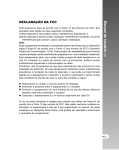
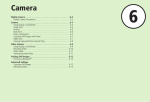
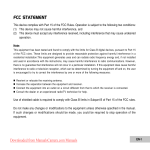
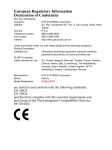

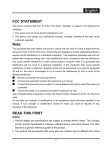
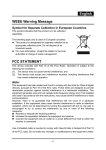
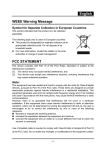
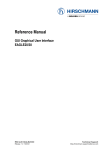
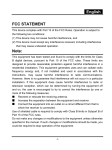
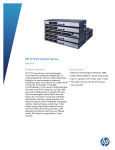

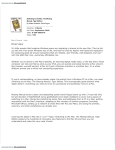
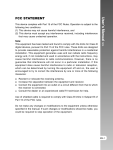
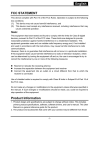
![[ ] playback mode](http://vs1.manualzilla.com/store/data/005894332_1-eb04455062e124c285a30d79ed1ad6c3-150x150.png)

